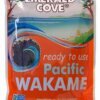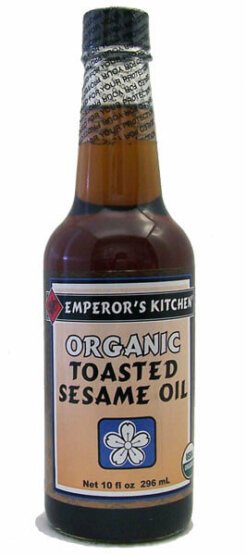Emerald Cove Pacific Kombu ~ Premium Quality
$5.16 – $49.88Price range: $5.16 through $49.88
Emerald Cove Pacific Kombu is a delicious sea vegetable most commonly used to make Dashi (stock). Dashi is the base of many Japanese dishes and valued as a vital and richly flavored ingredient, and is indispensible to Japanese cuisine. Kombu is also used to soften beans and makes their protein more digestible.
Non-GMO Verified | Gluten-Free
1.76 oz Plastic Bag | 35 oz Plastic Bag
Emerald Cove Pacific Kombu is grown on nets hung between posts secured on the shallow ocean bottom off the northern shore of the Shandong Peninsula in North China, the closest point to Japan in China. The Kombu spores attach themselves to the nets naturally so no actual cultivation is necessary and no fertilizer or herbicide is used. Kombu (Laminaria japonica) is a fine source of natural sodium glutamate, and, when used as a base for soups and broths, acts as a natural flavor enhancer for all other ingredients.
MORE KOMBU INFORMATION*
Kombu is sold dried (dashi kombu) or pickled in vinegar (su kombu) or as a dried shred (oboro kombu,tororo kombu or shiraga kombu). It may also be eaten fresh in sashimi.
Kombu is used extensively in Japanese cuisines as one of the three main ingredients needed to make dashi, a soup stock. Kombu dashi is made by putting either whole dried or powdered kombu in cold water and heating it to near-boiling. The softened kombu is commonly eaten after cooking or is sliced and used to make tsukudani, a dish that is simmered in soy sauce and mirin.
Kombu may be pickled with sweet-and-sour flavoring, cut into small strips about 5 or 6 cm long and 2 cm wide. These are often eaten as a snack with green tea. It is often included when cooking beans, putatively to add nutrients and improve their digestibility.
Kombu is also used to prepare a seasoning for rice to be made into sushi.
Traditional Okinawan cuisine relies heavily on kombu as a part of the diet; this practice began in the Edo period. Okinawa uses more kombu per household than any other prefecture. In the 20th century, a way to cultivate kombu was discovered and it became cheap and readily available.
*SOURCE: Wikipedia
| Weight | N/A |
|---|---|
| SIZE | 1.76 oz, 35 oz |
Only logged in customers who have purchased this product may leave a review.
Related products
Organic Pantry
Organic Pantry
Organic Pantry
Organic Pantry
Organic Pantry
Organic Pantry
Organic Pantry
Organic Pantry
















Reviews
There are no reviews yet.